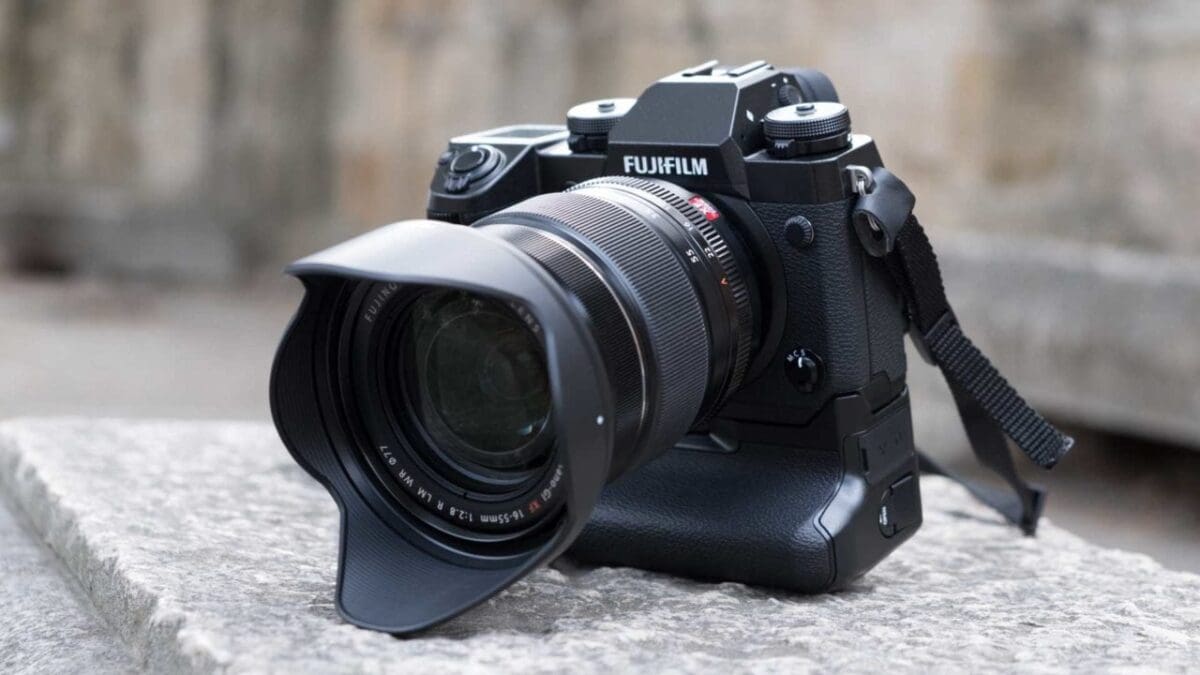Fujifilm X-H1 Snap Verdict
The Fujifilm X-H1 combines elements of the Fuji GFX 50S, X-T2 and X-E3, with better autofocusing, a first-rate viewfinder and a robust build that includes a large, comfortable grip. The image quality that the sensor and processing engine produces is the same as from the X-T2 and X-Pro2 etc, but the improved focusing and 5-axis image stabilisation give the photographer greater chance of getting the full benefit of that imaging combination. In many ways the X-H1 is a delight to use, but I miss the exposure compensation dial of the X-T2.
For Fujifilm X-H1
- C4K video with F-Log and 200Mbps
- 5-axis image stabilisation built-in
- Superb viewfinder
Against Fujifilm X-H1
- Autofocusing not as good as some of the competition in low-light
- No dedicated exposure compensation dial
- EVF eye-cup can block the view of the top of the main screen
What is the Fujifilm X-H1?
The Fujifilm X-H1 is a mirrorless or compact system camera with Fujifilm’s respected 24.3Mp APS-C format X-Trans CMOS III sensor and X-Processor Pro engine. While this is the same sensor and processor combination as the X-T2 and X-Pro2, Fuji has given the X-H1 a few enhancements including C4K video capability and 5-axis in-body image stabilisation (IBIS), plus some handling refinements to give it flagship status. The Fuji X-H1 is aimed at experienced and professional photographers.
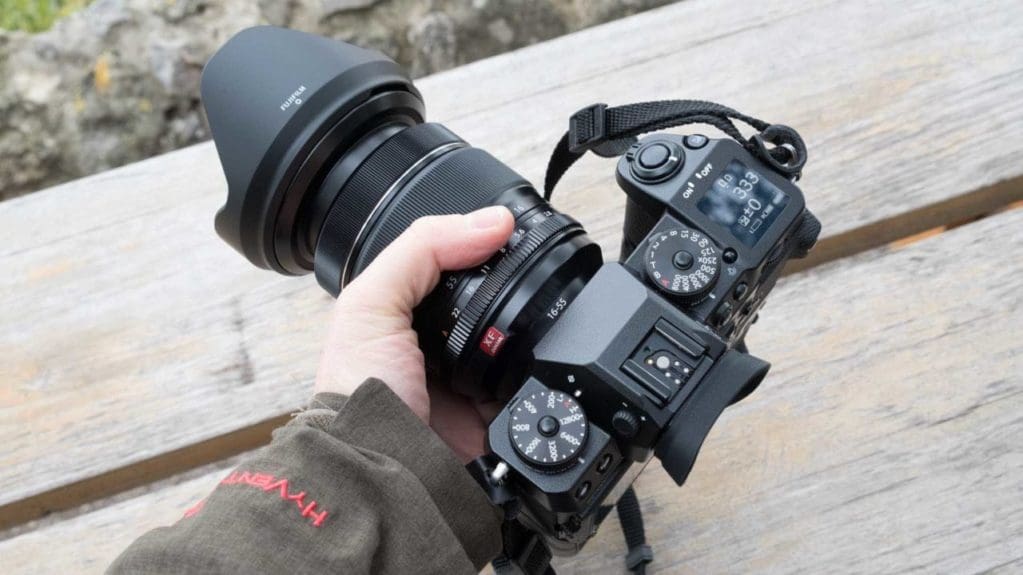
Features
The X-H1 is like a cross between the Fujifilm GFX 50S and the X-T2 with some of the gesture control of the X-E3 added for good measure. Externally it seems like a mini-FGFX, but it has much of the technology of the X-T2 inside (although the viewfinder has the same resolution as the GFX’s).
At the heart of the X-H1 is the same APS-C format 24.3Mp X-Trans CMOS III sensor and X-Processor Pro as is found in Fuji’s current X-Series range of interchangeable lens cameras. This means that the new camera produces the same image quality as the X-T2.
However, one of the most widely anticipated introductions made by the X-H1 is the 5-axis in-body image stabilisation system (IBIS). This is a first for the Fuji X-Series and it uses three axial accelerometers, three axial Gyro sensors, and a dual-processor arrangement to enable the hand-held shutter speed to be extended by a claimed maximum of 5.5 stops with the XF 35mm f/1.4 R mounted.
In a bid to draw the maximum amount of detail from the X-H1’s low-pass filterless sensor, the camera’s mechanical shutter has a new spring mechanism that helps reduce the vibration that results from its release. This also contributes to making the X-H1’s mechanical shutter the quietest of Fuji’s X-Series to date.
If you need to shoot silently, there’s an electronic shutter – which naturally reduces vibration even further.
Autofocus
Like the X-T2, the X-H1 has an Intelligent Hybrid Autofocus (AF) system that combines phase detection with contrast detection. There’s a maximum of 325 AF points available for selection, but this can be limited to 91 if you prefer.
Fujifilm has improved the X-H1’s phase detection autofocus (AF) algorithm over that of the X-T2, making it sensitive down to -1EV. The contrast detection element remains the same and is sensitive down to -3EV.
While that’s an improvement on the X-T2, with cameras like the (much more expensive) Nikon D850 having phase detection focusing that’s sensitive down to -4EV, -1EV isn’t an especially impressive figure – although it is augmented by the contrast detection system.
The phase detection system is also able to operate with maximum apertures as small as f/11. That means it will function when the XF100-400mmF4.5-5.6 R LM OIS WR is mounted via the XF2X TC WR teleconverter, which is a major plus for wildlife photographers.
Fujifilm also says that the continuous autofocus (AF-C) system has been enhanced to make the X-H1 better when shooting moving subjects than previous X-Series cameras.
Fujifilm’s Eye Detection Autofocusing is available and it’s possible to set it to automatically detect for Eyes or to specify whether to give the left or right eye priority.
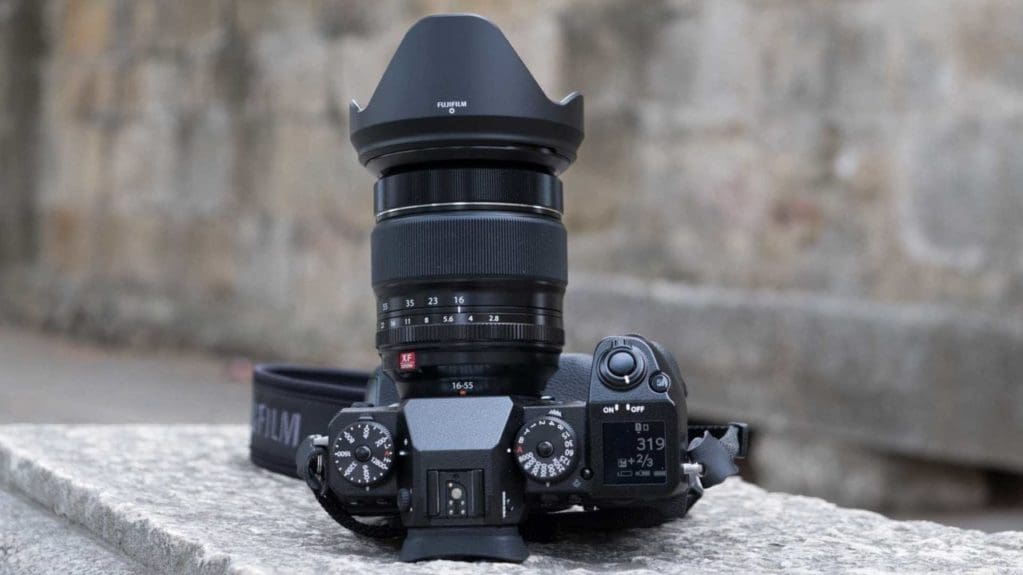
Video Features
The headline video features of the X-H1 are its C4K (4096×2160) and 200Mbps shooting capability long with F-log recording that operates when the footage is saved to an SD-type memory card.
There’s also a new ‘Eterna‘ Film Simulation mode that is intended for use in movie mode. This calibrates the camera to output footage that resembles the appearance of cinematic film, reining-in the colour saturation and delivering rich shadows.
Footage is 8-bit and has 4:2:0 colour when recording to a memory card or 4:2:2 when recording to an external device.
Slow motion fans can shoot Full-HD footage at up to 120p.
The Dynamic Range setting for video can also be set to 400% and this is claimed to extend the range to 12EV.
An internal mic (24 bit/48 kHz) is provided but there’s a 3.5mm port to connect an external mic for sound recording. If you want to connect headphones, however, you’ll have to invest in the optional Vertical Power Boost grip VPB-XH1. This grip also extends the 4K video recording time to 30mins at a time.
Good news for multi-camera shooters is that the X-H1 has a Time Code option.
Build Quality
As I mentioned earlier, the X-H1 looks a bit like a mini GFX 50S. Its grip is much bigger than the X-T2’s, which make it feel more secure in your hand. More significantly, it is a better size and shape for use with long, heavy lenses.
Fuji has also given the X-H1 a more solid build with a reinforced lens mount and magnesium alloy that’s 25% thicker. According to Fuji’s Makoto Oishi, this makes it twice as tough as the X-T2.
In addition to being dust and water-resistant, the new camera is freeze-resistant down to -10°C and it has a scratch-resistant coating that has a hardness equivalent to 8H. That should make it suitable for use in a wide range of conditions, enhancing its appeal to landscape and sports photographers – or anyone who needs a camera that can withstand a bit of abuse.
Back-button focusing is often favoured by sports photographers as it allows them to separate the focusing and shutter firing across two controls. With this in mind, the X-H1 has an AF-ON button on its back.
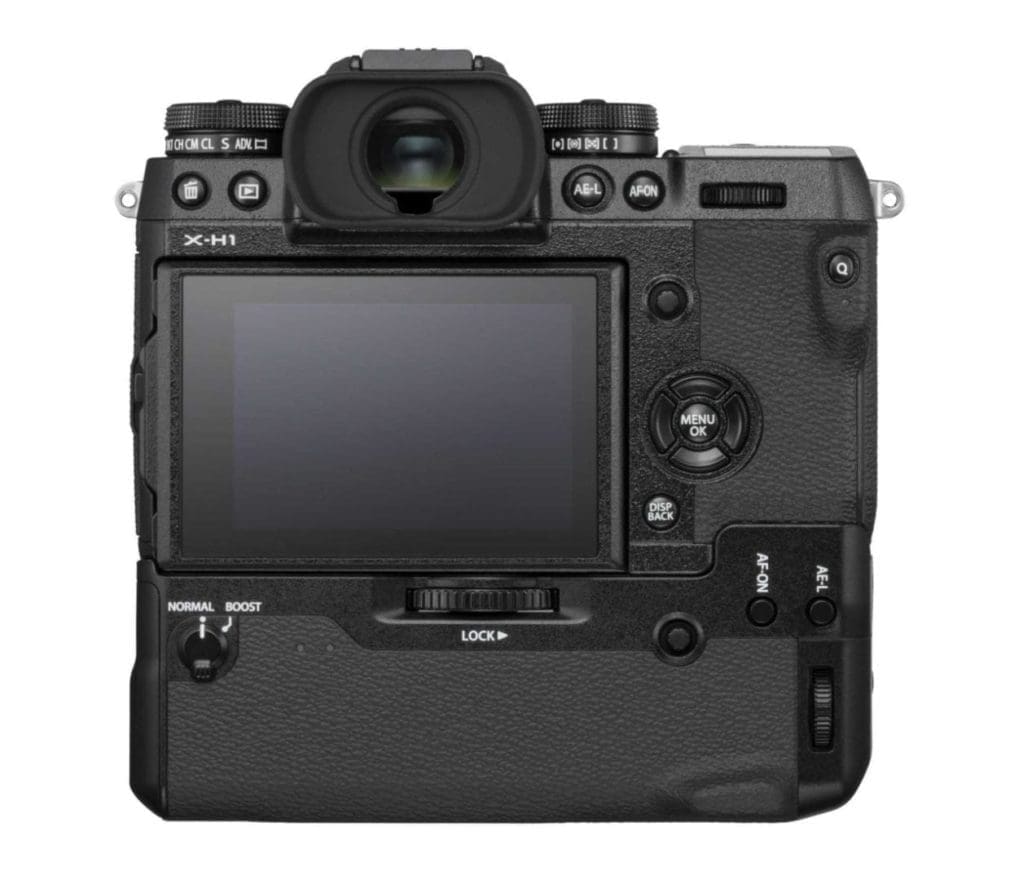
Further good news on the handling front is that the rear buttons are a bit bigger than those on the X-T2 and the popular focus lever or mini-joystick control is available for AF point selection.
Unlike the X-T2, the X-H1 doesn’t have an exposure compensation dial. Instead, there’s a button that can be pressed while the rear control is rotated. This isn’t especially easy to locate with your finger, particularly in cold weather. It’s possible to assign exposure compensation to another button, for example, the one between the lens mount and front grip, but I found this awkward to press while rotating the rear dial. Someone with large hands may find it easier. Consequently, I miss the dedicated dial of the X-T2.
The Q button, which is used to access the Quick Menu is on the ridge next to the thumb rest on the back of the camera. This ridge is pronounced enough for the button to not get pressed accidentally and although the control itself is quite hard to distinguish with your thumb, pressing the ridge is enough to bring-up the required menu. However, I’d prefer to reach across to the left with my thumb rather than to the right, it’s an easier movement to make when you’re looking in the viewfinder.
Release
The new shuttler mechanism makes a difference to the sound of the X-H1 compared to the X-T2, it’s much quieter. However, the shutter release feels a bit squidgy. With a few hours of use, I started to get used to it, but during your first shoot you can reasonably expect to fire off a few images when you’re only intending to focus the lens with a half-press of the shutter button. You need to be especially careful when using it to start or stop video recording, it’s easy to start recording and continue to press the button so you either introduce so wobble into the footage or stop the recording.
Viewfinder
The X-T2 has an excellent electronic viewfinder (EVF) but Fujifilm has taken things a little further for the X-H1. The EVF is borrowed from the medium format GFX 50S, giving it a 3.60million-dot device with 0.75x magnification. When the Power Management is set to Boost, the EVF has a frame rate of 100fps (frames per second) and a lag of just 0.005 seconds, which means that the image is nice and smooth. It’s very pleasant to use, coming about as close to natural looking as is currently possible with an electronic viewfinder.
Inevitably, in very low light there’s a slight shimmer of noise, but it’s not a major problem – and at least you can see the scene you’re attempting to photograph.
The colour and brightness of the image in the viewfinder varies depending upon the camera settings, but on some occasions, I find the image preview slightly more saturated than the captured image (even when they’re viewed in the viewfinder), tends to be more noticeable with blue skies.
You can turn the colour saturation of the EVF down, but this has an impact on the preview and review image.
An optional wide-eye cup EC-XH-W is available if you want to cut out more ambient light. In recognition that not all photographers compose images with their right eye, this can be rotated in 90° steps. This means that it fits around the contours of your face whichever eye you use, improving comfort and giving a clearer view.
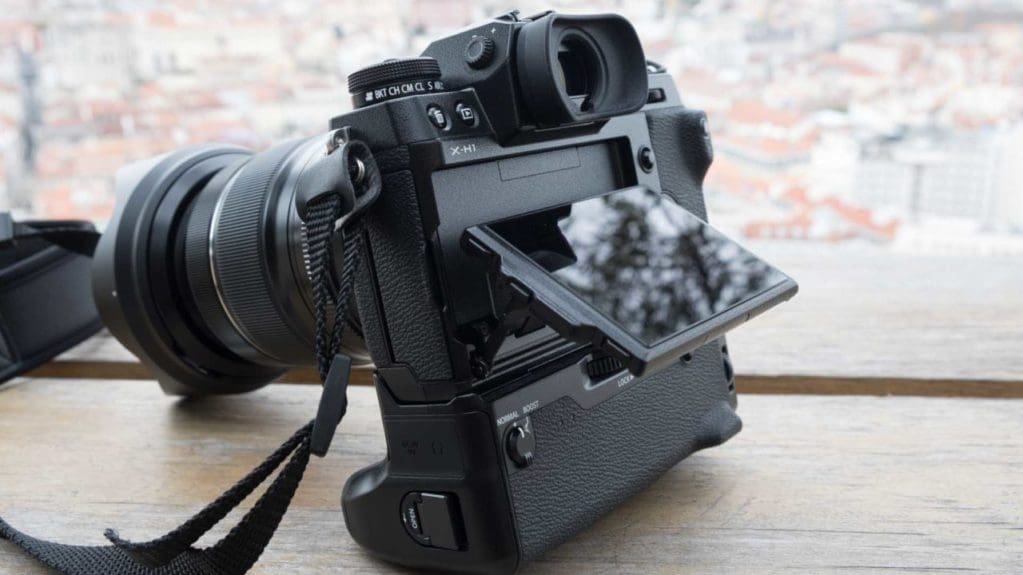
Screen
Although it’s a little clunky, the 3-direction tilt mechanism of the screen on the back of the camera has a durable feel. It’s not as intuitive to use as a standard vary-angle hinge, but it’s not exactly rocket science either.
The tilt mechanism enables a clear view of the 3-inch 1.04 million-dot touch-sensitive screen when shooting from creative angles. That said, shooting from waist-level, I was frustrated that the standard eye-cup of the viewfinder obscured the top section of the screen. It’s especially annoying when shooting video because you can’t see the red record indicator flashing. A few times I removed the eye-cup to give me a clearer view.
Fuji has made the screen touch sensitive and in addition to being able to set AF point with a tap. You can also make Quick Menu settings selections via the screen and swipe up, down, left or right to access key features. These Quick Menu settings are customisable via the menu with a total of 37 features being available for access with a swipe.
These swipe controls are particularly useful when you’re shooting video because you can use the screen to silently access the mic control or bring p the histogram view.
The main screen is supplemented by a 1.28-inch LCD on the top-plate for displaying key camera settings. It’s useful on occasion, but I don’t get quite so excited by a top-plate screen on a camera with a tilting main screen.
When the camera is turned off, this screen shows the battery level, the card slot in use, the remaining capacity of the card and the level of exposure compensation set. That last point, along with the traditional exposure controls, means that you’re able to check the exposure settings without powering-up the camera.
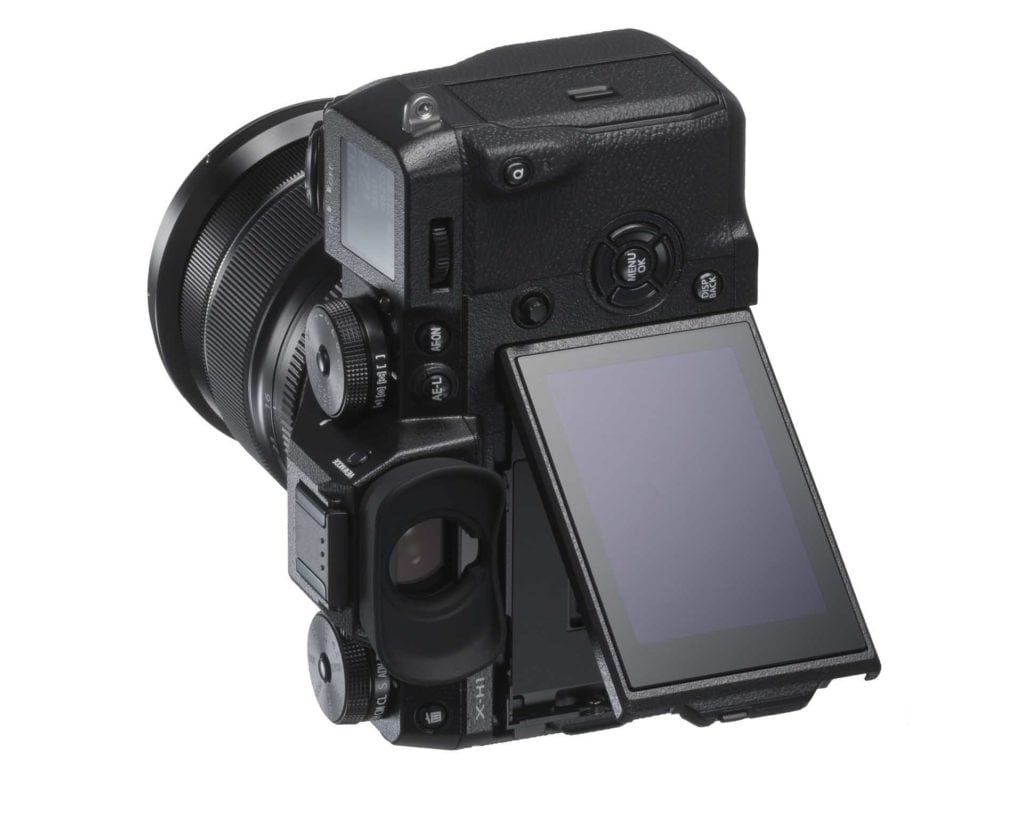
Performance
As with other X-Series cameras, I find the X-H1’s 256-Zone metering system generally reliable. Setting the viewfinder to display the image with the exposure settings taken into account is beneficial, just in case any exposure compensation is required.
There were a few occasions when I needed to adjust the exposure, but it was usually only by 1/3 or 2/3EV and could largely be predicted by looking at the brightness of the scene. On some occasions, I made an adjustment to intensify the colours in the image.
This is the first time we’ve seen in-body image stabilisation in a Fuji X-Series camera and it seems good, but not quite up to the standard set by the Olympus OM-D E-M1 Mark II. I had a hit rate of around 50% when shooting with the 56mm (equivalent to 84mm on a full-frame camera) when shooting at 0.3second, which is compensation factor of around 5EV. Switching to the XF 16-55mm R LM WR lens at 55mm and my hit rate at 1/8 sec was 60% and 20% at 1/4 sec, giving compensation values of around 3.5 and 4.5EV respectively.
Image Quality
The quality of the images from the X-H1 doesn’t come as a surprise. Noise is handled well in the standard sensitivity range (ISO 200-12,800), but some detail is lost in the high expansion settings (topping-out at ISO 51,200).
I would happily use the full native range, and even ISO 25,600. But I’d only opt to use ISO 51,200 if I really needed a record shot.
I spent some time comparing images from the X-H1 with those from the X-T2 and I’ve concluded that apart from those situations when the stabilisation system delivers a sharp shot instead of a blurred one, or allows a lower sensitivity (ISO) setting to be used, or the AF system gets a subject sharp that the X-T2’s misses, their image quality is, as Fuji says, the same.
Like other Fuji X-Series cameras, the X-H1 produces very attractive low and mid-sensitivity range images. There’s a high level of detail and the mid-tone contrast helps makes the most of it.
I haven’t met anyone yet who doesn’t like the colours that Fuji’s cameras produce in one or more of the Film Simulation modes – there’s something for everyone. Some pro photographers even like to use them to avoid having to spend time processing raw files.
Autofocus
In good light I found the X-H1 focuses quickly and accurately, but when shooting some dancers in quite low light indoors, I found I had a few images where the focus was wrong. There are also many where it is bang-on, but I felt some of the missed shots should have been obtainable.
AF-C Custom Settings
Like the X-T2, the X-H1 has Fuji’s AF-C Custom Settings that allow you to tailor the response of the continuous autofocus (AF) system to the shooting conditions. This has five ‘Sets’ with specific values set for Tracking Sensitivity, Speed Tracking Sensitivity and Zone Area Switching. A sixth set is available for storing the photographer’s preferred settings.
Set 1 is the Multiple Purpose option and it’s a good choice for many subjects, but the others have their uses too. Set 5, which is for an erratically moving and accelerating/decelerating subject, for example, can be useful when photographing animals – such as my dog running across a field. I found Set 3, for an accelerating or decelerating subject useful when photographing someone sledging down a hill.
These customisation options are used in conjunction with the AF Mode settings.The Wide/Tracking setting is appealing because it’s designed to follow a subject around the frame and towards or away from the camera. However, I found it unreliable even with a that moves in a fairly straight line and at a steady pace.
After shooting moving subjects in each of the AF Modes (Single Point, Zone, Wide/Tracking and All), I’ve concluded that it’s best to use Single Point mode if you can and to vary the size of that point to enable you to keep the active area over the subject as it moves. That’s not an uncommon conclusion, but the tracking capability of Sony’s recent cameras like the A7R III, A9 and now the A7 III is very good.
Dynamic Range
Although the X-H1 produces images that have attractively high contrast, they also have good dynamic range. The shadows in raw files respond well to brightening, in some cases even when over 4EV of adjustment is required. This means that if you take care to preserve the highlights, it’s possible to produce images with the detail and tone where you want it to be.
Video
This is the first time that it’s been possible to record 4096×2160 video with a Fujifilm X-Series camera and the results are very impressive. The new Film Simulation mode, Eterna, that’s specifically intended for video produces natural, if slightly muted tones while the F-Log setting produces the very flat footage that many videographers crave.
Those who want their video to match their stills, and to have sharable footage straight from the camera will appreciate that it’s possible to shoot in most of the other Film Simulation modes.
The continuous focusing is good for video, I experienced a few occasions when it hunted briefly, but generally, it makes smooth transitions from one focus point to another.
Fujifilm X-H1 Sample Photos

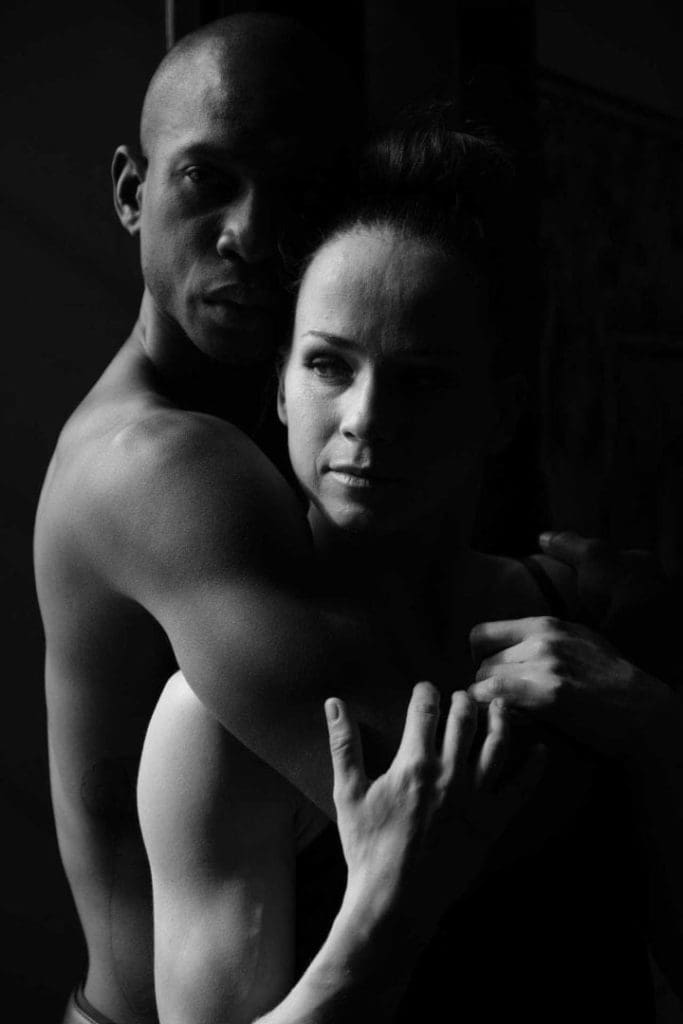
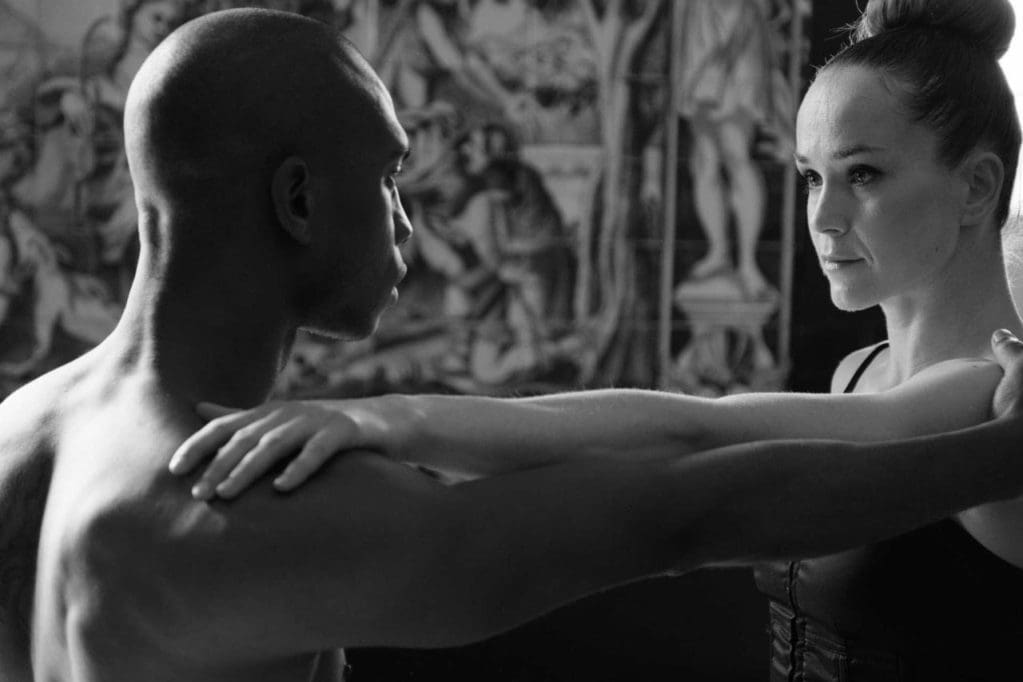


Follow the link to browse and download full-resolution sample images from the X-H1
[FAG id=56314]
Sample Video
Shot handheld with the X-H1 set to 4096×2160 24p 200Mbps and using the Eterna Film Simulation mode
Shot handheld at the Fujifilm press event with the X-H1 set to 3840×2160 25p 1/50sec.
This sample video was provided by Fujifilm:
Verdict
The X-H1 is an interesting camera. It seems very familiar in many respects and combines the best bits of several cameras into one model.
On the whole, the controls are logically arranged. Dials or switches enable you to select shutter speed, aperture, sensitivity, drive mode and focus mode. The layout of controls makes it easy to see the selected settings and they can be adjusted quickly. However, I found myself missing the X-T2’s exposure compensation dial, it’s just so convenient in a way that a button and dial adjustment can’t replicate.
In reasonable light, the autofocus system is good, and it is possible to shoot fast moving subjects. However, Fuji’s tracking system isn’t as good as Sony’s and in low light the AF performance isn’t consistent.
However, the image quality from the X-H1 is lovely with nicely controlled noise and attractive colours. It’s also a lovely camera to hold and use.
Fujifilm X-H1 Rating
Overall Score: [usr 4.5 text=”false” size=20]
Features: [usr 4.5 text=”false”]
Build and Handling: [usr 4 text=”false”]
Performance: [usr 4.5 text=”false”]
Image Quality: [usr 4.5 text=”false”]
Should I buy the Fujifilm X-H1?
In the early days of mirrorless cameras, they were billed as the smaller, simpler alternative to an SLR. Now, nearly 10 years on, their specifications have evolved and they are finding their way into more experienced enthusiast and professional photographers’ hands. And while there is still a place for a small camera, camera manufacturers and many photographers recognise that there are also advantages to having a larger camera.
The X-H1 is a good choice for someone who wants a bigger camera than the X-T2, yet wants to stick with an APS-C format sensor. The Fuji X-H1 is not intended as a replacement or an upgrade to any camera. It’s the first of a new line, but it is a step-up from the X-T2 in some respects. However, with the exception of the potential impact of the in-body images stabilisation (IBIS) system and the improved autofocusing system, the image quality remains unchanged.

